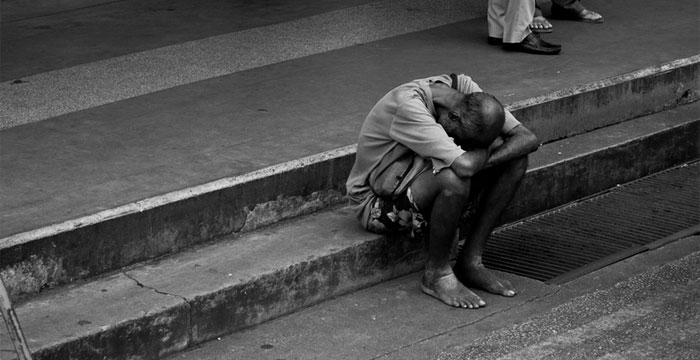It may come as a shock to some people when you tell them that there is poverty in Singapore. But you know, and I know, poverty is universal and Singapore is definitely not immune to this problem.
But what's truly shocking is the poverty of Singapore's poverty data.
In fact, record-keeping in this area is so bad that experts who study the poverty issue here are bemoaning the fact they don't have readily available information to make sense of the scope of the problem.
And this shouldn't be the case because Singapore mines a wealth of data from GDP numbers to how many people pass through our borders to how many children each race is having a year.
Therefore, here are three factors that will help us all understand why the poverty of Singapore's poverty data is absurd.
1. Singapore has not defined its poverty line.
This is as good as saying "Singapore has not defined what is the legal age to have sex".
Singapore is a country that is known for defining everything.
Cut off point for PSLE score. The exact number of people that constitutes an "unlawful assembly". Income ceiling. Start time for ERP gantries. GRC boundaries.
But when the time comes to draw the line at who is poor, or rather, poor enough, we falter.
Basically, Singapore has not, and never had, defined where its poverty line lies.
Consider this: Last month, Hong Kong has joined a host of developed economies in defining its poverty line for the first time.
They set it at half the median household income, excluding tax and welfare transfers.
And this is a very important point because, together with Hong Kong, Singapore has one of the highest levels of inequality in the developed world.
Low and falling real wages of the bottom 20 percent of employed residents has contributed to the growing inequality.
2. We sure know how much one individual, Jim Rogers, is worth when we let him into Singapore.
But we are as good as completely clueless when it comes to figuring out how poor the bottom 10 percent of society is getting by.
There are 105,000 households in the bottom 10 percent of the income scale, defined as the working poor, but there is no readily available information on the number of retiree and unemployed households that are struggling financially.
And we certainly have some data available on the poor. For instance, the Public Assistance Scheme targets 3,047 households who have little means of income and little family support.
3. The authorities are not convinced defining a poverty line is effective in aiding its allevation.
Member of Parliament, Seah Kian Peng, who is chairman of the Government Parliamentary Committee for Social and Family Development, said:
"I think it is not clear whether having a poverty line is effective in aiding poverty alleviation, from the experience of countries that have established such benchmarks.
Like many Singaporeans, I have been to the United States, Britain, Hong Kong and Japan and I can say that in many of these places, I do see more poor people on the streets and this is a less common sight in Singapore.
I think we should not classify people as 'poor' or 'needy' based on their income as this would oversimplify the complex issues they might face. For example, someone with an income level greater than the set poverty line might still require assistance - they may, for example, have a sick dependant. At the same time, we should not assume that everyone who falls below the poverty line requires or wants assistance, as they might have other avenues of support, such as assets, family or community support.
Thus far, in Singapore, we have been using a flexible needs-based approach to identify and help those who need assistance. Appropriate assistance is rendered based on their specific needs.
We should continue to target those who need help the most and reinforce individual effort and responsibility."
Ok, never mind him. Here's how an official poverty line is useful in three ways:
1. Help focus attention on the degree of poverty here and track how it is tackled -- Laurence Lien, Nominated Member of Parliament, who is helming the Caritas campaign on poverty, called Singaporeans Against Poverty.
2. Better information and data on the poor will help spur philanthropy as it helps private donors decide where to channel their money -- Catherine Loh, chief executive of the Community Foundation of Singapore (CFS).
3. Drawing a poverty line will show clearly if there are still citizens who are falling below the minimum standards of living in spite of various assistance schemes helping them. -- Jean Koh, acting centre manager at Care Corner Family Service Centre.
Top photo from here
If you like what you read, follow us on Facebook, Instagram, Twitter and Telegram to get the latest updates.
